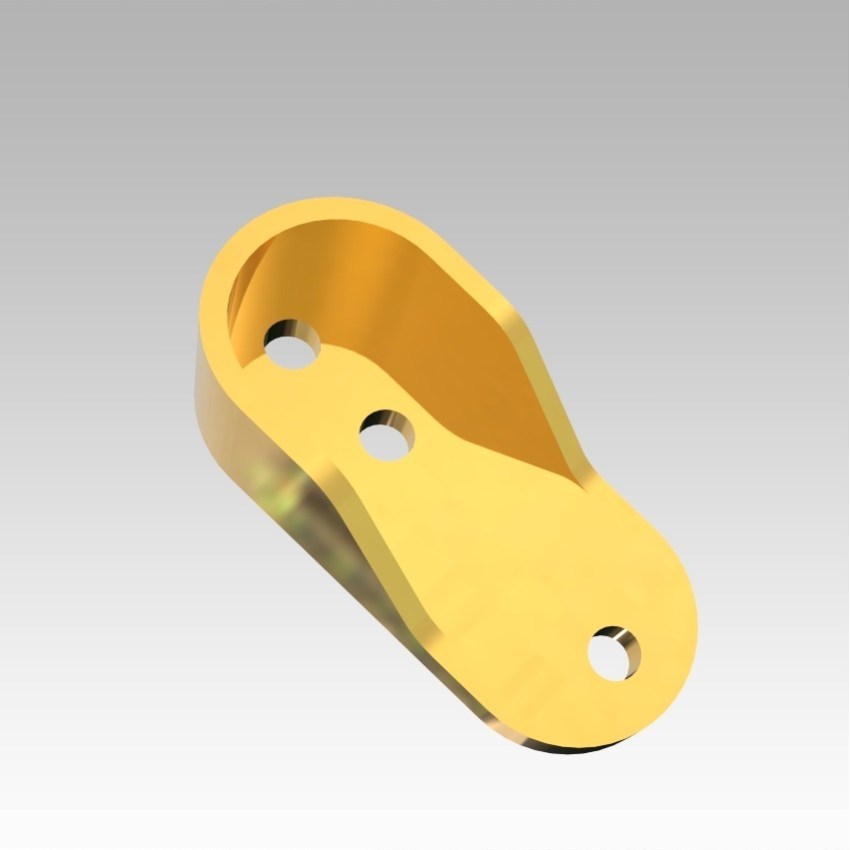Understanding CNC Machined Aluminum Parts: A Comprehensive Guide
Release time:
2025-02-28
CNC (Computer Numerical Control) machining has revolutionized the manufacturing of metal components, particularly aluminum parts. CNC machined aluminum parts are essential in various sectors, including aerospace, automotive, electronics, and industrial machinery. The process leverages computer software to control machine tools, enabling high precision and repeatability that manual machining cannot

CNC (Computer Numerical Control) machining has revolutionized the manufacturing of metal components, particularly aluminum parts. CNC machined aluminum parts are essential in various sectors, including aerospace, automotive, electronics, and industrial machinery. The process leverages computer software to control machine tools, enabling high precision and repeatability that manual machining cannot achieve.
Aluminum is a popular choice for CNC machining due to its lightweight, durability, and excellent machinability. It is resistant to corrosion, which makes it ideal for components that need to withstand harsh environments. Additionally, its thermal and electrical conductivity makes it suitable for various applications, including heat sinks and electrical enclosures.
One of the principal benefits of CNC machined aluminum parts is their complexity and design flexibility. With advanced CAD (Computer-Aided Design) software, engineers can create intricate geometries that are often impossible to achieve with traditional manufacturing methods. This capability allows for the production of lightweight yet strong components tailored to specific applications, enhancing overall product performance.
The process begins with selecting the right grade of aluminum, as there are numerous alloys available, each with unique properties. For instance, 6061 aluminum is commonly used for its good mechanical properties and weldability, while 7075 aluminum is favored for its high strength-to-weight ratio. After selecting the material, a CNC machine is programmed with the design specifications, and the machining process begins. This may involve milling, turning, drilling, or other operations, depending on the part's requirements.
Quality control is vital in the production of CNC machined aluminum parts. Manufacturers often implement stringent testing and inspection protocols to ensure that each component meets the required tolerances and specifications. Techniques such as CNC coordinate measuring machines (CMM) can be employed to verify the accuracy of the machined parts, ensuring they fit perfectly in their intended applications.
In conclusion, CNC machined aluminum parts are a cornerstone of modern manufacturing, providing precision and versatility across a myriad of industries. Their lightweight nature, combined with high strength and resistance to corrosion, makes them ideal for a wide range of applications. With ongoing advancements in CNC technology, the future of aluminum machining looks promising, paving the way for even more innovative solutions in mechanical engineering and design. Understanding these components can help businesses make informed decisions when it comes to sourcing and utilizing machined parts in their projects.
Aluminum is a popular choice for CNC machining due to its lightweight, durability, and excellent machinability. It is resistant to corrosion, which makes it ideal for components that need to withstand harsh environments. Additionally, its thermal and electrical conductivity makes it suitable for various applications, including heat sinks and electrical enclosures.
One of the principal benefits of CNC machined aluminum parts is their complexity and design flexibility. With advanced CAD (Computer-Aided Design) software, engineers can create intricate geometries that are often impossible to achieve with traditional manufacturing methods. This capability allows for the production of lightweight yet strong components tailored to specific applications, enhancing overall product performance.
The process begins with selecting the right grade of aluminum, as there are numerous alloys available, each with unique properties. For instance, 6061 aluminum is commonly used for its good mechanical properties and weldability, while 7075 aluminum is favored for its high strength-to-weight ratio. After selecting the material, a CNC machine is programmed with the design specifications, and the machining process begins. This may involve milling, turning, drilling, or other operations, depending on the part's requirements.
Quality control is vital in the production of CNC machined aluminum parts. Manufacturers often implement stringent testing and inspection protocols to ensure that each component meets the required tolerances and specifications. Techniques such as CNC coordinate measuring machines (CMM) can be employed to verify the accuracy of the machined parts, ensuring they fit perfectly in their intended applications.
In conclusion, CNC machined aluminum parts are a cornerstone of modern manufacturing, providing precision and versatility across a myriad of industries. Their lightweight nature, combined with high strength and resistance to corrosion, makes them ideal for a wide range of applications. With ongoing advancements in CNC technology, the future of aluminum machining looks promising, paving the way for even more innovative solutions in mechanical engineering and design. Understanding these components can help businesses make informed decisions when it comes to sourcing and utilizing machined parts in their projects.
Key words:





